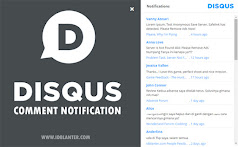The holidays are a time for giving, and Googlers across the globe have found some creative ways to give back to their communities this season. From raising money and crafting greeting cards to building gingerbread houses and giving blood, Googlers from east to west have been busy spreading good cheer. We've highlighted just a few of these efforts here, and we're looking forward to many more opportunities to give back in the new year.
London
The UK engineering recruitment team started to plan its annual Secret Santa gift exchange. But as they began thinking about last year, they realized that hardly anyone on the team could remember what they'd received, let alone given. Instead of spending 10 pounds on gag gifts, they decided to use the money to make a difference. After discovering that a local children's hospital was in desperate need of gifts, they quickly raised enough money to buy a Nintendo Wii gaming console for one of the wards.

Mexico City
In the past, Google has held a "Doodle 4 Google" contest in the US, the UK, and Australia, inviting kids K-12 to submit a homepage doodle inspired by a particular theme. This year Mexico held its first such contest (theme: "the Mexico we want"). For each doodle submitted, Google donated to a non-profit that works to eradicate childhood malnutrition in Mexico. In total, more than 70,000 kilos (154,000 pounds) of food and aid were donated. Winner, Ana Karen Villagómez, was recently recognized in a ceremony in Mexico City; her doodle (pictured below) will appear on the Google homepage on January 6.

Boston and beyond
Boston Googlers delivered gifts to some very grateful students at a local school and spent the morning reading and playing with the children. The Chicago office held its first-ever holiday blood drive, donating 36 units of blood. And the Ann Arbor office held a "CANstruction" competition, creating sculptures out of canned food, personal items and baby items, which were all later donated.

We hope that your holiday season is filled with plenty of time to slow down and reflect on what's important to you, and that you too feel inspired to find ways to give back to your own community in the new year.
London
The UK engineering recruitment team started to plan its annual Secret Santa gift exchange. But as they began thinking about last year, they realized that hardly anyone on the team could remember what they'd received, let alone given. Instead of spending 10 pounds on gag gifts, they decided to use the money to make a difference. After discovering that a local children's hospital was in desperate need of gifts, they quickly raised enough money to buy a Nintendo Wii gaming console for one of the wards.

Mexico City
In the past, Google has held a "Doodle 4 Google" contest in the US, the UK, and Australia, inviting kids K-12 to submit a homepage doodle inspired by a particular theme. This year Mexico held its first such contest (theme: "the Mexico we want"). For each doodle submitted, Google donated to a non-profit that works to eradicate childhood malnutrition in Mexico. In total, more than 70,000 kilos (154,000 pounds) of food and aid were donated. Winner, Ana Karen Villagómez, was recently recognized in a ceremony in Mexico City; her doodle (pictured below) will appear on the Google homepage on January 6.

Boston and beyond
Boston Googlers delivered gifts to some very grateful students at a local school and spent the morning reading and playing with the children. The Chicago office held its first-ever holiday blood drive, donating 36 units of blood. And the Ann Arbor office held a "CANstruction" competition, creating sculptures out of canned food, personal items and baby items, which were all later donated.

We hope that your holiday season is filled with plenty of time to slow down and reflect on what's important to you, and that you too feel inspired to find ways to give back to your own community in the new year.












 Cryptography is notoriously hard to get right and if improperly used, can create serious security holes. Common mistakes include using the wrong cipher modes or obsolete algorithms, composing primitives in an unsafe manner, hard-coding keys in source code, or failing to anticipate the need for future key rotation. With these risks in mind, we're pleased to announce the open-source release of
Cryptography is notoriously hard to get right and if improperly used, can create serious security holes. Common mistakes include using the wrong cipher modes or obsolete algorithms, composing primitives in an unsafe manner, hard-coding keys in source code, or failing to anticipate the need for future key rotation. With these risks in mind, we're pleased to announce the open-source release of 








.jpg)

